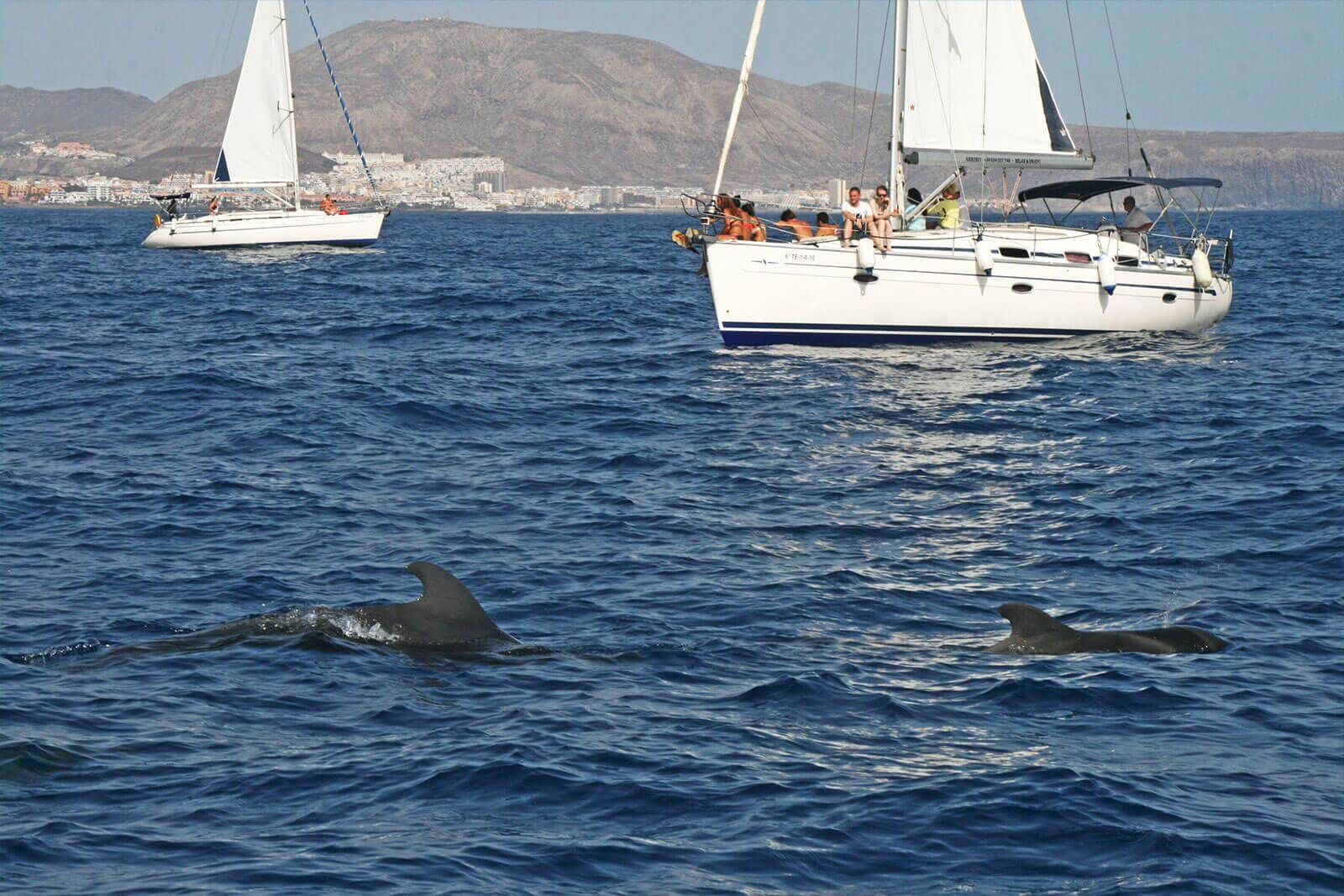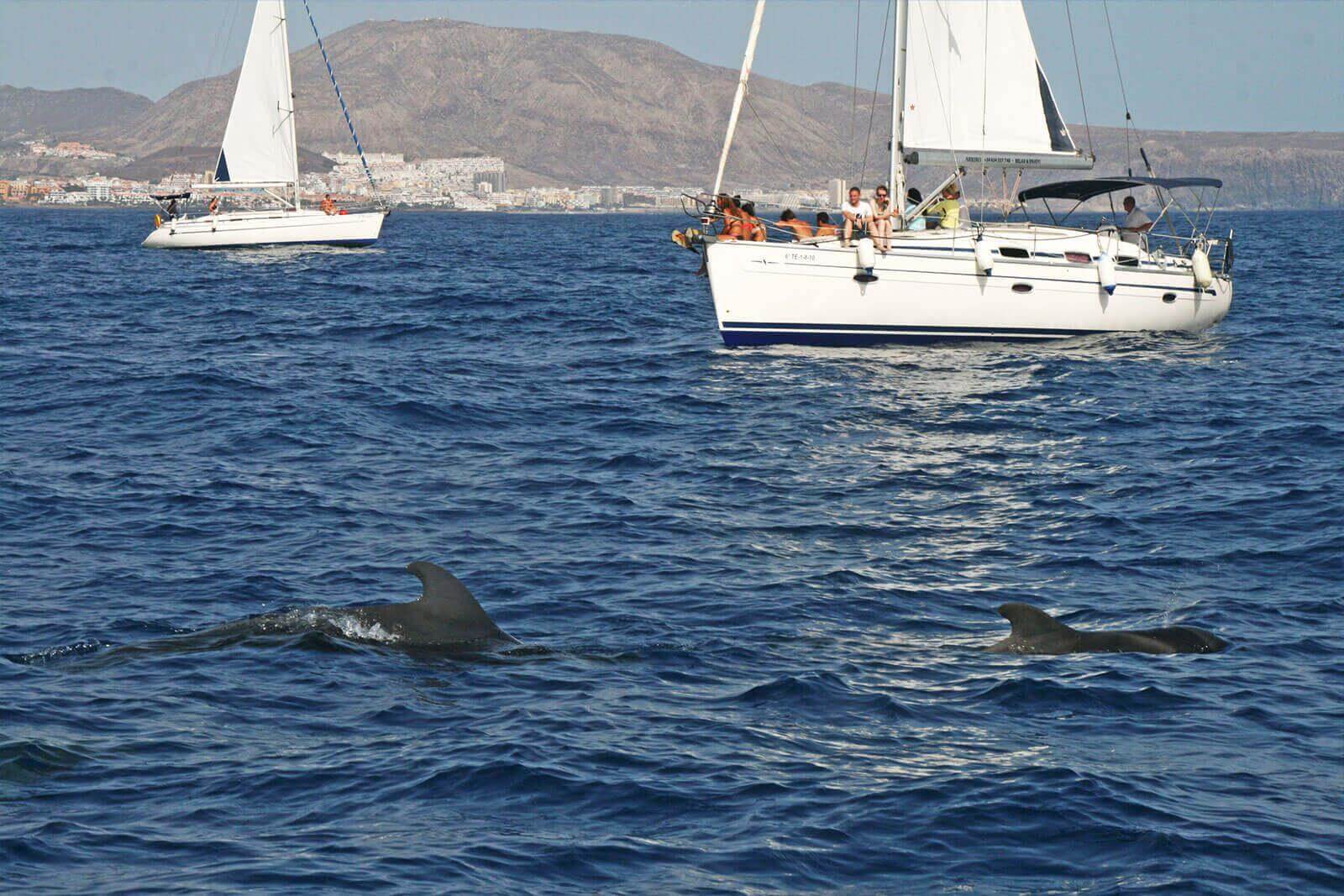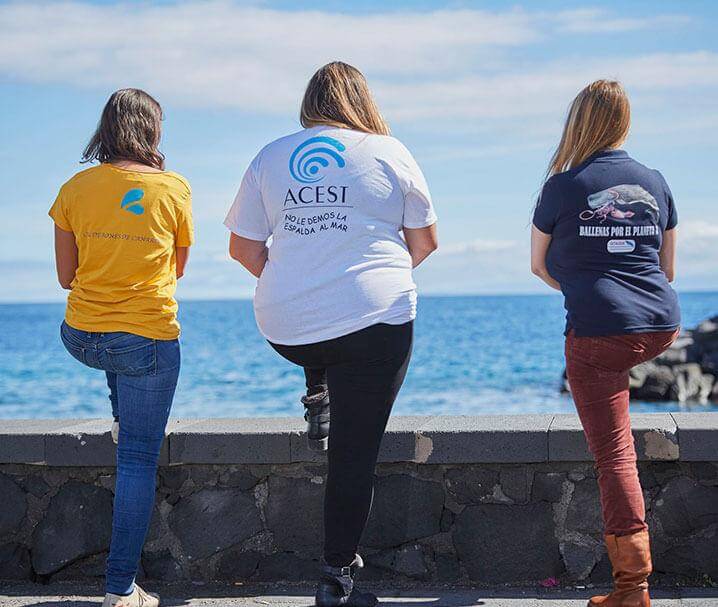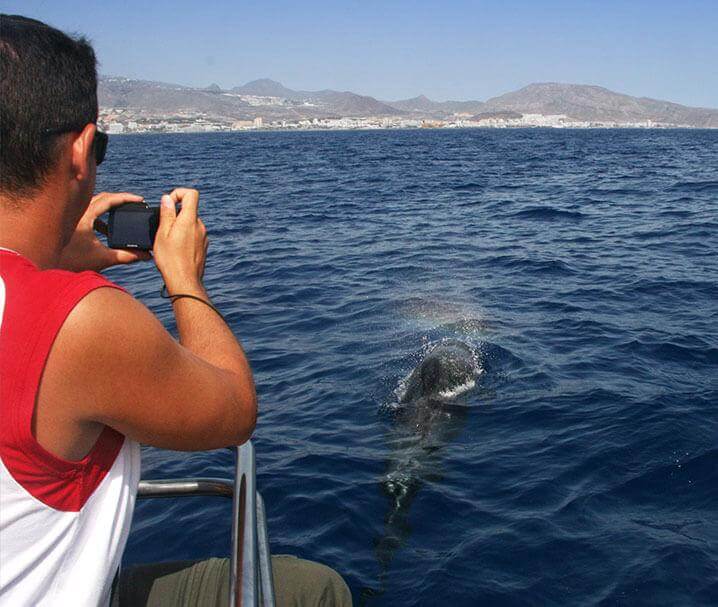The concentration of more than 30 different species of cetaceans in the waters of the Canary Islands make them a unique place in the world for whale and dolphin watching. You can see up to nine different species in a single day on a whale and dolphin watching trip. But how can we combine the interest generated by observing these marine mammals with their wellbeing?
A unique variety of marine mammals
The Canary Islands are a paradise of biodiversity: 30 species of cetaceans can be found here. This huge abundance means the Canary Islands are a unique location. The geographical location and oceanographic conditions of the islands are what make this wide diversity of cetaceans possible, to the extent that one can observe up to nine species in a single day, something that occurs in very few places around the world. Whale and dolphin watching excursions regularly afford sightings of the short-finned pilot whale, the Rissos dolphin, the sperm whale, the common bottlenose dolphin, the Atlantic spotted dolphin, the Bryde’s whale and Cuvier’s beaked whales.
Spotting dolphins and whales including sperm whales and Cuvier’s beaked whales within this small patch of ocean is a major tourist attraction. Who doesn’t like seeing them up close? Because the magic that is created when the fin of any of these magnificent creatures rises to the surface water is unsurpassable. But it also presents a challenge: How can we combine the interest generated by observing these marine mammals with their wellbeing?
Protected species
These species are protected by regional, national and European regulations, as well as by conventions ratified by Spain, like the Bonn and Bern Conventions. In fact, the Canary Islands contain several Special Protection Areas (SPAs) within the Natura 2000 Network.
“Some species are oceanic, rare and little-known in global terms. However, due to their proximity to the coast, they are easily accessible in the Canary Islands, making the archipelago an ideal laboratory for the research and conservation of this group of marine mammals”, Vidal Martín, director of the Society for the Study of Cetaceans in the Canary Archipelago (SECAC) points out.
Overcrowding of boats
Elsa Jiménez, director of the Cram Foundation, a private non-profit entity devoted to protecting the marine environment and the species that inhabit it, says that “the excessive presence of boats in places where cetaceans live can affect their lives. For example, their communication can be adversely affected because they use sound, and the noise of the engines distorts their ‘messages’”. They may also suffer from stress and, oddly enough, collide with all types of boats, from a ferry to a sailing boat.
The wellbeing of cetaceans
To conserve this paradise, it is important that we engage in responsible tourism. Which is why in the Canary Islands, all of the companies that offer responsible whale and dolphin spotting tours have the “Blue Boat” badge. The yellow flag with the “Blue Boat” emblem in the middle certifies that they comply with current regulations relating to responsible whale and dolphin watching activities.
This regulation states that boats should not approach the cetaceans while sailing, and should keep a minimum distance of 60 metres. They must also switch off their engines if the animals are very close. It is forbidden to swim with the cetaceans, feed them and/or engage in any type of interaction, such as touching them.
Moreover, if there are groupings of vessels, the security measures are even stricter, to allow the animals to carry on with their normal activity (movement, feeding, etc.).
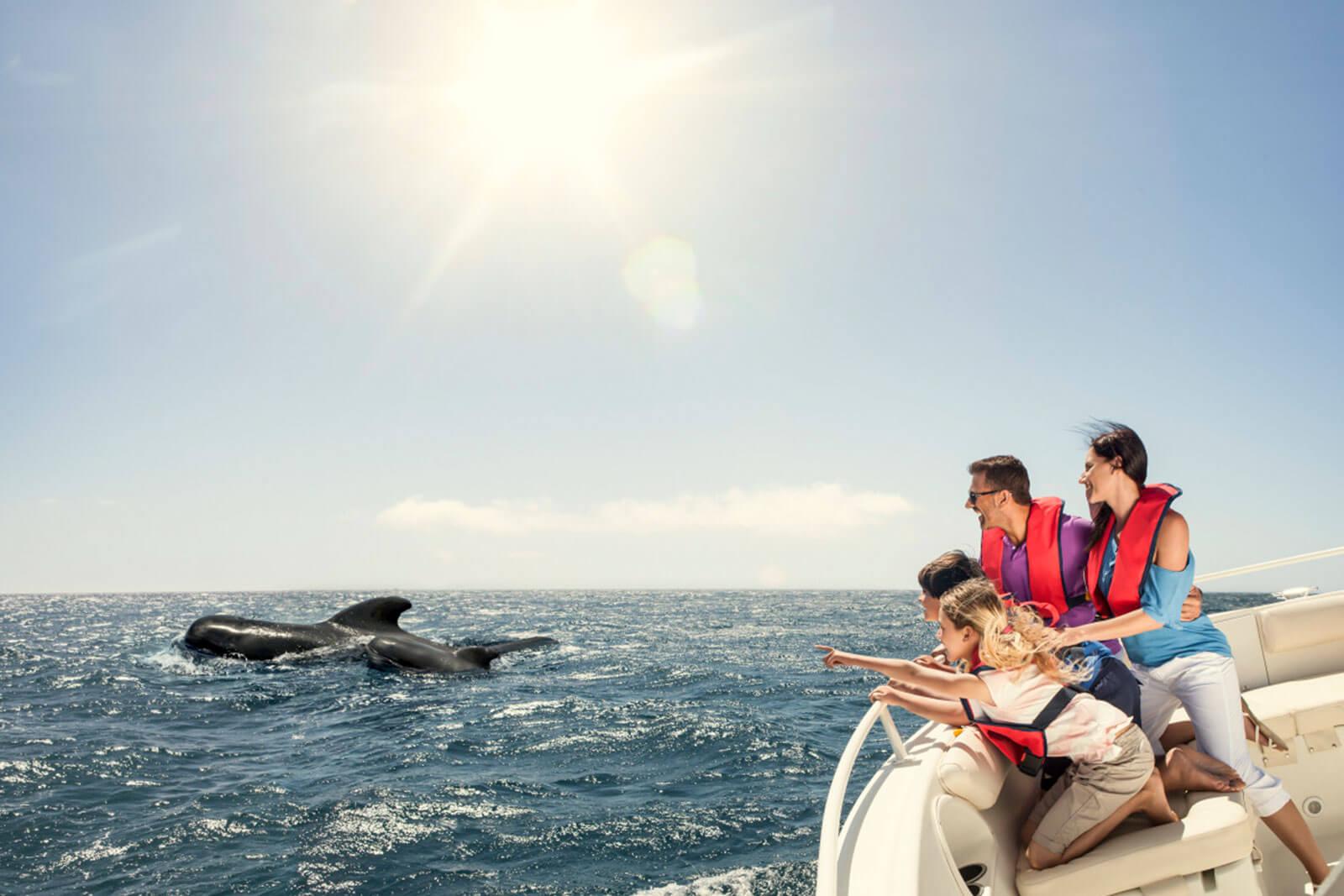
“Blue Boat” badge
In order to guarantee the wellbeing of these animals, it is important that we choose companies that fly the “Blue Boat” flag. Their activities raise awareness on the importance of conserving our sea and its inhabitants.
“Basically,” Jiménez concludes, “it is about respecting the environment they live in”. And that includes following the norms like those established for holders of the “Blue Boat” badge, but also details as simple - and apparently obvious - for tourists as not using the ocean as a waste paper bin. Because at the end of the day, tourism that respects the environment starts with you.



